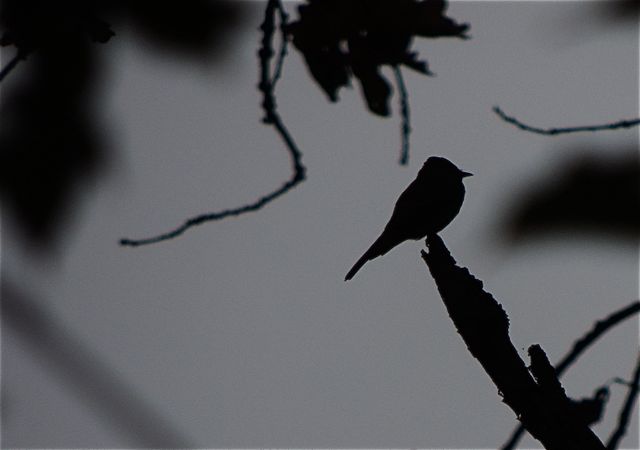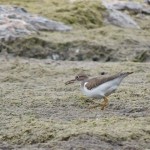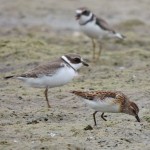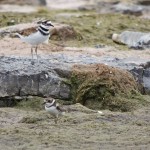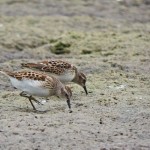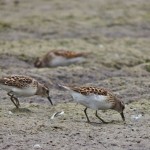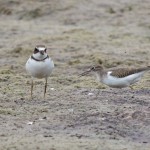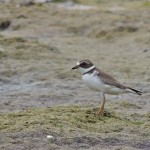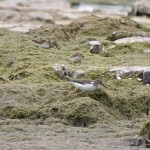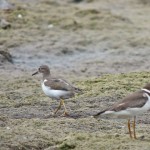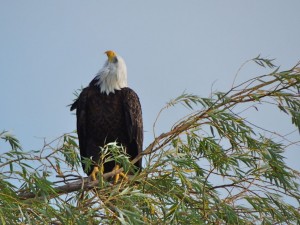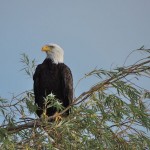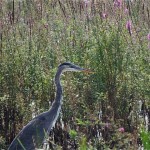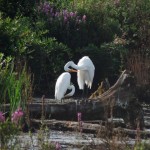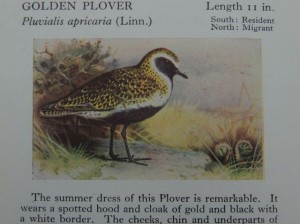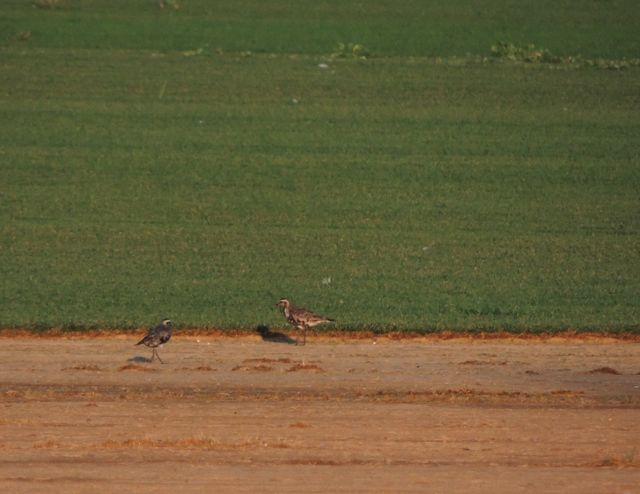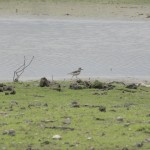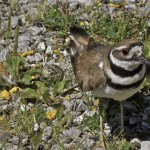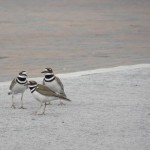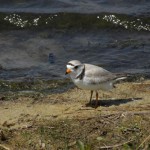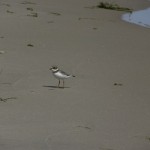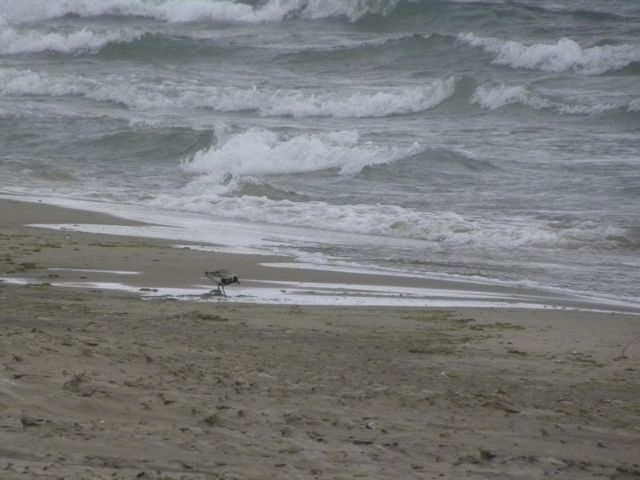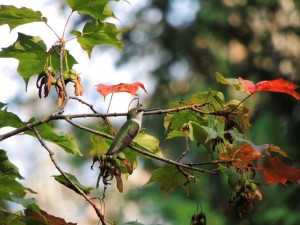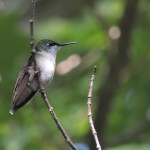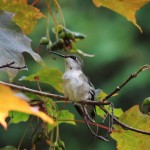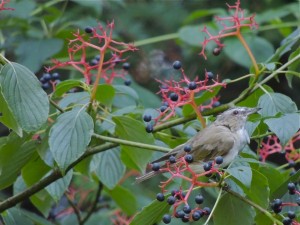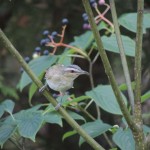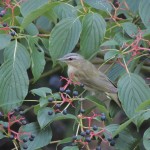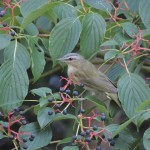3 September 2013. Ruthven Park, Cayuga ON. Eastern Wood Peewee, the unsung hero of the woodland. Well, maybe not unsung, but overlooked certainly; they’re late to arrive, reliable, melodic and now leaving in large numbers; my Bird of the Day today.
I was at the Ruthven Park Bird Observatory today, fall migration monitoring has restarted and it’s nice to be involved. The day’s work starts just before dawn (although rarely do I get there then, I have to drive for 45 minutes first) when the mist-nets are opened, and doesn’t stop until around lunchtime, or when six hours of monitoring has elapsed. I will usually undertake the daily census, a walk around a prescribed route recording everything (avian) seen and heard; it’s an interesting challenge to see how many species we encounter as the seasons change, today it was 27, yesterday (a gloomy and thunderous day) just 21, and the day before that, it was 37.
There were few surprises on today’s census walk-around. I know that many many birds go unseen and unheard on the census because on my return to the banding lab they’ll often ask me if I saw the Nashville Warbler, the Yellow-billed Cuckoo or the Curve-billed Thrasher, because they did; but only because the poor thing flew into a mist-net trying to sneak past in the understory. Today’s tally included a nice Least Flycatcher who came to see what all the noise was about, two Ospreys sitting sentinel in riverside trees hundreds of yards from each other, and a Ruby-throated Hummingbird on a wire.
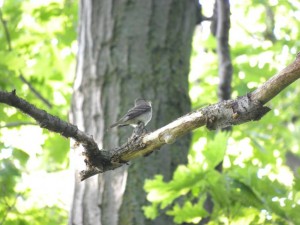
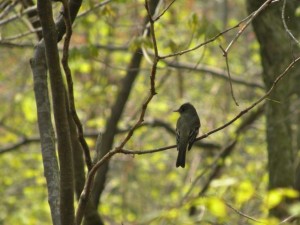
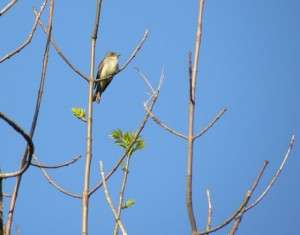 But as I started out by saying, the birds of the day were Eastern Wood Peewees. In one well-treed area I counted about 15 of them, although in truth I really couldn’t count them with much certainty, they were everywhere calling to each other: Pee-ee? – Pee-ur. If it wasn’t for their song you’d hardly know they were there, they’re so modestly attired. Perhaps they wanted to be seen today, a kind of farewell serenade.
But as I started out by saying, the birds of the day were Eastern Wood Peewees. In one well-treed area I counted about 15 of them, although in truth I really couldn’t count them with much certainty, they were everywhere calling to each other: Pee-ee? – Pee-ur. If it wasn’t for their song you’d hardly know they were there, they’re so modestly attired. Perhaps they wanted to be seen today, a kind of farewell serenade.
A little bit like the Red-eyed Vireo, their repetitive song is one of the hallmarks of a broadleaf forest summer day. Peewees prefer high look-out perches at woodland edges or near clearings and will sit waiting for a small meal to fly by when they’ll sally out, snatch it in mid-air and return to (usually) the same commanding perch. Peewees can be hard to separate visually from Least, Willow or Alder Flycatchers and Eastern Phoebes, but these others don’t go for that sort of woodland habitat and the Peewee’s two and three syllable signature “Pee-ur-wee? Pee –ur.” song is unmistakable.
As these photos from earlier days suggest, the peewee is most happy when its back is turned to the camera. It will never achieve stardom that way. Never mind here’s a cameo shot, it’s all I could manage today.